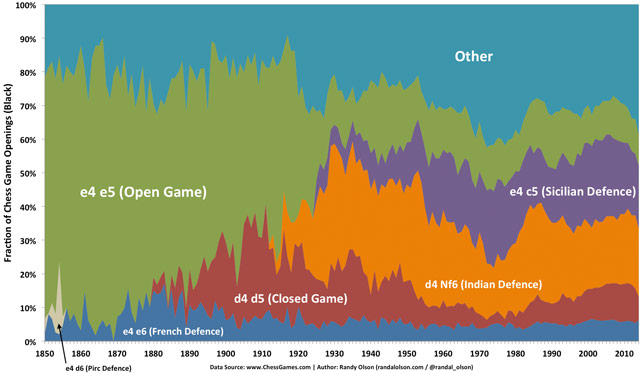Changing chess openings

The moves that expert chess players use to open a game have changed significantly since the 1850s.
It’s a well-known fact that White has a small advantage at the beginning of the game. To maintain this advantage, White should press their advantage to take over the middle of the board as quickly as possible. The most popular first White moves from 1850-2014 are shown below. Note that all of these are fairly aggressive openings that build toward control of the middle of the board.
In 1850, White openings were fairly homogeneous: Most chess experts played King’s Pawn. Chess players didn’t begin to explore variants of the King’s Pawn in earnest until the 1890s, when Queen’s Pawn (moving a Pawn to d4) started to replace King’s Pawn in some player’s repertoires. The 1920s saw another burst of innovation with the rising popularity of the Zukertort Opening (moving the Knight to f3) and the English Opening (moving a Pawn to c4), which completed the set of staple first-turn openings that are really ever used nowadays.





Stay Connected